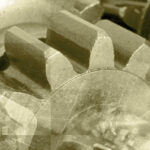3 Ways Manufacturers Can Claim R&D Tax Credits and the Best Way to Maximize R&D Savings
Realtrac Performance ERP’s feature saves manufacturers hundreds of thousands of dollars annually.
In 2017 manufacturers claimed $6 billion in R&D credits–but only 5% of qualifying companies were claiming those R&D credits. That means lots of companies—maybe yours—are missing out on big savings. We gathered up the top 3 ways manufacturers can claim R&D tax credits and the one best way to maximize those claims.
- Improving parts or products—was there a problem with a product or part that required solving on your shop’s end? Every part of the improvement process, from the design to the trial-and-error, is eligible for R&D credit. Here’s an example: a manufacturer tested which machine would work better for a customer, running a CNC punch press or a CNC mill. The manufacturer decides upon the punch press and then improves the timing of the program to best meet specifications of the parts. The evaluation, the testing, and then the improvements could all qualify as R&D tax credit eligible.
- Buying parts to improve products—the cost of supplies used to improve a customer’s product can be used for R&D tax credit. From tools, dies, and jigs to metal stampers and fabricators, manufacturers’ supply expenses may be eligible when used for researching and developing a specialized part or process. And as mentioned earlier, it’s not just the supplies expense that counts towards R&D credit, it’s the design and labor too.
- Altering processes to better produce a part are considered a stage of R&D. If a manufacturer needs to enhance a process for a specific product, the design, supply expense, and labor are all potentially eligible for the tax credit. If, for example, an air cylinder were added to a die to fix an issue with the product, the change would potentially be eligible for R&D tax credit.
Manufacturing companies often develop new parts and alter processes to best meet the customer’s needs and their own output maximization, yet they don’t correctly track it all. Everything from the hours spent drafting improvements to the actual implementation, the labor, and the supplies need to be accounted for to maximize savings. Tracking the expenses associated with R&D proved a difficult feat for many manufacturing companies because of logistical difficulties. If a manufacturing company has a good ERP system, though, tracking and reporting are a simple process.
To best maximize R&D tax credit savings, Realtrac Performance ERP designed a solution for manufacturing companies, which generates reports to provide tax professionals with all the necessary documents and information.
“Realtrac’s R&D reports are the simplest, most complete presentation of the documents we need,” said one tax consultant after reviewing multiple presentations.
Partnering up with a tax accountant firm and the machine shop just below Realtrac offices, Realtrac developed a committee from all three businesses to design a tool to generate reports necessary for R&D tax deductions especially for manufacturing companies. The result has saved customer companies hundreds of thousands of dollars annually since its implementation.
The R&D feature of Realtrac’s software allows users to easily flag jobs eligible for the tax credit. Users can generate two reports; one that breaks down employee labor hours and costs for R&D jobs over the course of the fiscal year; and one that tracks the buyout/material expenses related to the R&D jobs. These two reports, with a click of the button, provided accountants everything they needed to prepare the claim.
There’s literally billions more to be saved by manufacturing companies and it’s no longer limited to companies making a certain amount in gross receipts every year thanks to the Protecting Americans from Tax Hikes Act signed act. If your company is one of the many not taking advantage of R&D savings, then it’s time to talk to one of our professionals. Visit realtrac.com to contact us.










